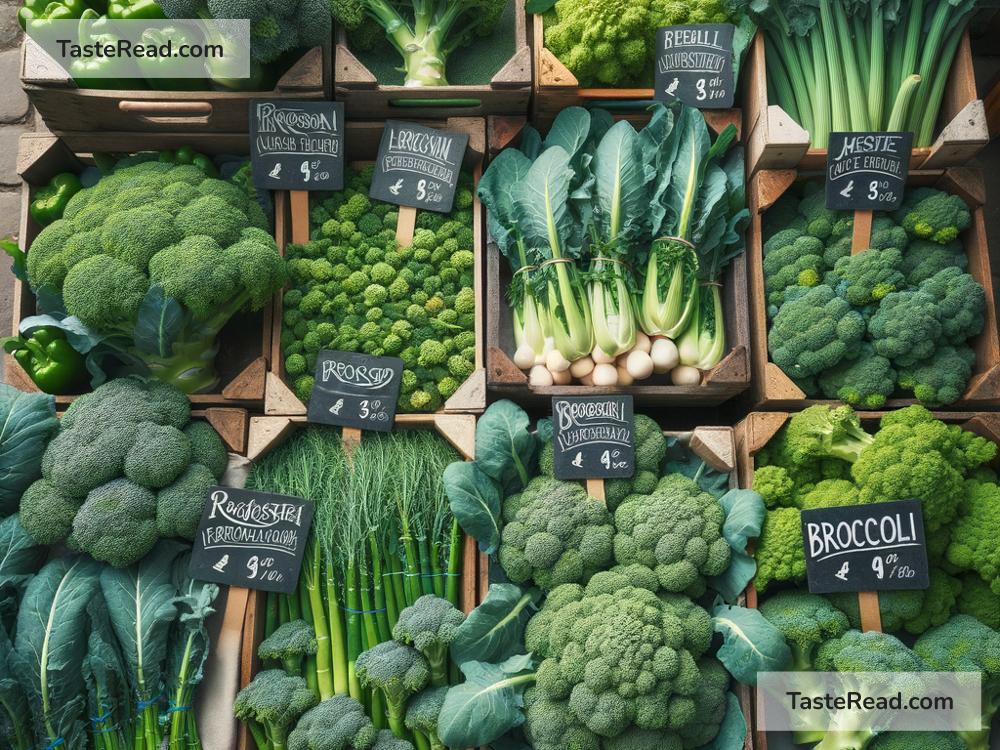How Hybrid Vegetables Like Broccolini Achieve Unique Flavors
Have you ever wondered why broccolini tastes different from broccoli? Or why some vegetables seem to have a flavor profile that’s more exciting and complex? The secret often lies in hybrid vegetables! These aren’t strange science experiments or unnatural modifications—they’re simply the result of clever plant breeding techniques. Hybrid vegetables, like broccolini, are fascinating creations that combine the best characteristics of two parent plants. Let’s dive into how they develop and achieve their unique flavors in a simple and easy-to-understand way.
What Are Hybrid Vegetables?
Hybrid vegetables are plants created by crossbreeding two different but related species of vegetables. The goal of hybridization is to combine the strengths of each plant to produce something better in terms of taste, texture, size, appearance, and even resilience to diseases or weather conditions.
This process isn’t new. Farmers and gardeners have been practicing controlled breeding for centuries, long before modern science gave us fancy tools for genetic modification. Hybridization is natural in the sense that it uses the plant’s natural reproductive system—it’s not about adding unnatural ingredients or chemicals to the mix. You simply bring the pollen from one plant to fertilize the other, and the resulting plant carries traits from both “parents.”
Broccolini: A Perfect Example of Hybridization
Broccolini is one of the most famous hybrid vegetables, and for good reason! It combines the best qualities of broccoli and Chinese kale (known as gai lan). Broccoli is a classic vegetable with tight, tree-like florets and a slightly bitter taste. Chinese kale, on the other hand, has long stems and a milder, sweet flavor. So, when the two were crossbred, the result was broccolini—a vegetable that looks somewhat like broccoli but with thinner stems, fewer florets, and a sweeter, more delicate flavor.
What’s so special about broccolini’s flavor? Well, it’s the perfect balance of earthy and sweet. The bitterness of broccoli is toned down by the sweetness from Chinese kale, creating a taste that’s both fresh and mild. Many people describe it as “less intense” than broccoli, which is why it’s so popular in stir-fries, salads, and even roasted dishes.
The Science Behind Hybrid Flavors
The unique flavor of broccolini (and other hybrid vegetables) comes from the way the parent plants’ traits mix together. Vegetables get their flavor from several factors, including:
-
Natural Compounds: Both broccoli and Chinese kale have certain compounds that contribute to their flavors. Broccoli contains glucosinolates, which give it that sharp, slightly bitter taste. Chinese kale has fewer glucosinolates but more sugars, contributing to a sweeter profile. When these two plants are combined, broccolini inherits a balanced mix of bitterness and sweetness, making it appealing to more people.
-
Texture Influences Flavor: The texture of a vegetable also affects how we perceive its taste. Broccolini’s tender stems create a pleasant eating experience compared to the tougher stalks of broccoli. When food feels good to bite into, the flavors seem more enjoyable.
-
Genetic Traits from Parent Plants: Hybrid vegetables often inherit genes that determine the concentration of compounds like sugars, acids, and aromatic molecules. These genes decide how flavorful the vegetable will become. Broccolini, for instance, inherited a gene combination that makes it sweeter and milder than broccoli.
Why Hybrid Vegetables Taste Better
Hybrid vegetables are designed (through careful crossbreeding) to achieve the best possible flavor. Farmers and scientists might focus on specific goals, such as reducing bitterness, increasing sweetness, or enhancing aroma. They also take into account how people like to cook and eat vegetables.
For example, broccolini cooks faster than traditional broccoli and doesn’t need as much seasoning to taste good. Its natural sweetness pairs well with simple spices or sauces, making it a versatile vegetable for home cooks.
Other hybrid veggies, like zucchini squash hybrids or hybrid tomatoes, follow similar principles. They’re bred to increase sweetness, reduce wateriness, or improve texture—all of which contribute to how they taste on our plates.
Are Hybrids Better Than Regular Vegetables?
Not necessarily! Regular vegetables like broccoli, carrots, or kale are amazing on their own, and some people prefer their stronger flavors. Hybrids, however, give you more options. They’re perfect if you want a vegetable that’s milder, sweeter, or fits a specific cooking style.
Take broccolini, for example—it’s become a favorite for those who find broccoli’s taste a little too overpowering. Hybrids are also a great way for farmers to overcome challenges like pests, weather extremes, or limited growing seasons. By combining traits from different plants, hybrids can grow more easily and deliver a consistent flavor, which is why they’re common in supermarkets today.
Final Thoughts: Why We Love Hybrid Vegetables
Hybrid vegetables like broccolini showcase nature’s creativity combined with human ingenuity. They bring together the best traits of two plants to create something new and exciting. These hybrids often have unique flavors that delight our taste buds, combining sweetness, tenderness, and subtle hints of earthiness in ways that traditional vegetables sometimes can’t.
So, next time you see broccolini in the produce aisle or bite into a sweet hybrid tomato, remember the fascinating science of hybridization! These veggies are proof that there’s still plenty of room to explore and innovate in the world of food—all while keeping things natural and delicious.


